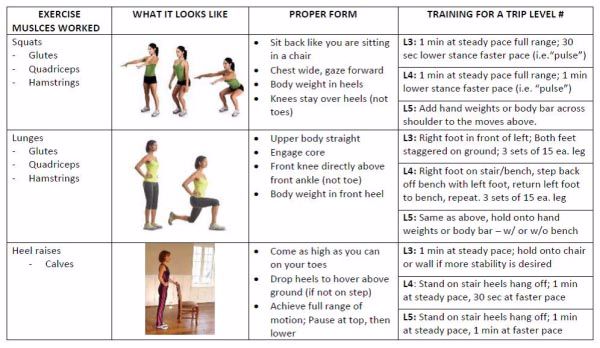For years, my exercise routine included cardio (running/walking, cycling, stair master, etc.), upper body weight training, and abs. I figured that my cardio routine was ‘enough’ exercise for my legs, so I could skip lower body weight training. After hitting a plateau (i.e. I didn’t see much improvement in my fitness level and my body just got conditioned to the same exercises), I consulted a personal trainer. She gave me a workout routine that included LOTS (or at least more than I had ever done) leg toning exercises. She explained that while cardio was working my legs, to really feel the benefits and see improvement – lower body resistance training is a key element in the workout mix. Hesitantly, I began to incorporate leg exercises into my workouts, and…she was right! Within a week or two I broke my plateau and began to see progress in my fitness level and leg shape. She made a believer out of me.
If you’re looking to break your own plateau, increase your fitness level, or train for a hiking trip, lower body resistance training should not be pushed aside. You see, your largest muscles are in your legs. Large muscles have the capacity to burn more calories than small muscles. So when you work your legs the calorie expenditure is greater than small muscles in the upper body or core. And as your body becomes comprised of more muscle and therefore less fat, your metabolism also increases – that is, when walking to your car, even sitting and breathing you will burn more calories. With your improved fitness and leg strength, that outdoor adventure vacation that you’ve been unsure about, can become an ENOYABLE reality.
To begin this leg journey, review the chart below. It includes recommended exercises for each AGC trips rated levels 3-5. Within the table there are suggested leg toning exercises. The intensity/duration of the exercise is broken down into levels 3, 4, and 5 (L3, L4, L5). If the L3 recommended exercises seem too much for you, then do half of what is recommended. And again these exercises should be done in conjunction with a cardio program. For more on that, see past blogs Training Tips (Part I of III): 3 Month Sample Cardio Routine and Training Tips (Part II of III): RPE Decoded for Active Travel .



